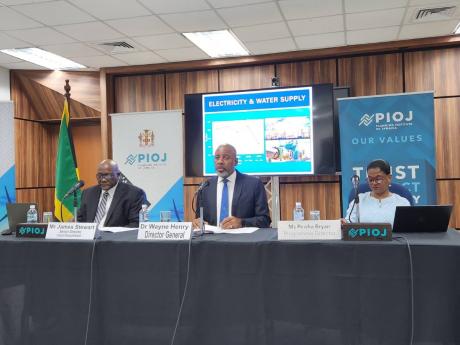Jamaica reassessing First-World nation goal under Vision 2030
With six years to go to meet its time line, Jamaica has achieved 60 per cent of its goal towards developed-world status under its Vision 2030: National Development Plan.
The likelihood of fully achieving its objective by 2030 remains slim, according to Peisha Bryan Lee, programme director of Vision 2030.
“Our data suggests that the goals and outcomes, particularly the targets that were benchmarked against the developed-country status standards, will most likely not be attained by 2030,” stated Bryan Lee at the Planning Institute of Jamaica's (PIOJ) quarterly press briefing on Wednesday, highlighting the economic output.
In 2007, the authorities assessed that the country could reach development status in 21 years by 2030. Bryan Lee said that the focus was not to be stuck on a timeline, but to be stuck on a pathway - “a vision of Jamaica we all want to live in, and experience”.
The PIOJ will evaluate the progress towards Vision 2030 targets in its upcoming Medium-Term Socio-Economic Policy Framework ((MTF) 2024-2027 document.
“We hope to finish in a month or two,” said Bryan Lee about the document.
“We have been reexamining our 2030 targets in terms of what is feasible and what is not feasible. Of course, when the document is complete, those results will be communicated,” she said.
“Roughly 60 per cent of our indicators are on track.”
Despite the challenges, Vision 2030 continues to serve as the guiding framework for the country's development process. The Government is also considering what the future holds beyond 2030.
“For the next fiscal year, we plan to start a comprehensive evaluation to determine what needs to be done to move the country forward,” Bryan Lee said.
Significant progress in other areas
Although some key Vision 2030 outcomes may fall short, Bryan Lee acknowledged significant progress in certain areas. For instance, Jamaica is outperforming countries at similar development levels in innovation, “but as a country, we feel we are falling short,” she said.
The nation also made macroeconomic progress in terms of stability and debt reduction. Jamaica was one of a handful of nations to reduce its debt since the COVID-19 pandemic from over 110 per cent in 2020 to below 72 per cent.
The upcoming MTF assessment will compare Jamaica's targets and outcomes, both quantitatively and qualitatively, and will also rank the island against its development peers.
“From that, we will see what is feasible from the lessons learned in policy, strategy and legislation,” Bryan Lee said, adding that the goal is to galvanise the country around key strategies and policies to achieve the vision.
Jamaica aims to achieve four national goals and 15 national outcomes under Vision 2030. The national goals are: Jamaicans are Empowered to Achieve their Fullest Potential; the Jamaican Society is Secure, Cohesive and Just; Jamaica's Economy is Prosperous; and Jamaica has a Healthy Natural Environment.
“The country's development performance has been mixed,” said Dr Wayne Henry, director general at the PIOJ.
Henry reasoned that one-quarter of all the goals were achieved, when compared to the baseline year of 2007. One-third of the targets, however, were the “same as or worse than the baseline year”.
Issues related to poverty, housing insecurity, and crime remain concerns, among other social matters.
Among the 10 concerns Henry highlighted were, “Overrepresentation of violence and a high per capita murder rate by global standards. Also, undesirable rates of tenure insecurity, that is, there are still too many persons without titles to their land.”
ECONOMY REMAINS RELATIVELY FLAT
Also, at the press conference, the PIOJ reported that the economy remained relatively flat, with an estimated growth of 0.1 per cent during the April to June 2024 quarter.
The PIOJ forecasts the economy to decline in the July to September quarter from a range of negative 1.0 to negative 0.1 per cent at best, because of damage from Hurricane Beryl.
“Short-term prospects for the overall economy are negative, largely associated with the adverse impact of Hurricane Beryl on production activities,” stated Henry.
Despite these challenges, there remains potential for recovery in the latter half of the fiscal year, supported by rebuilding efforts and improvements in business confidence, he stated.
Henry expects a downturn in output levels from tourism, agriculture, and mining going forward.
The outlook for fiscal year ending March 2025 hovers between negative 1.0 and 1.0 per cent. This, however, depends on the pace of recovery from the fallout caused by Hurricane Beryl.


